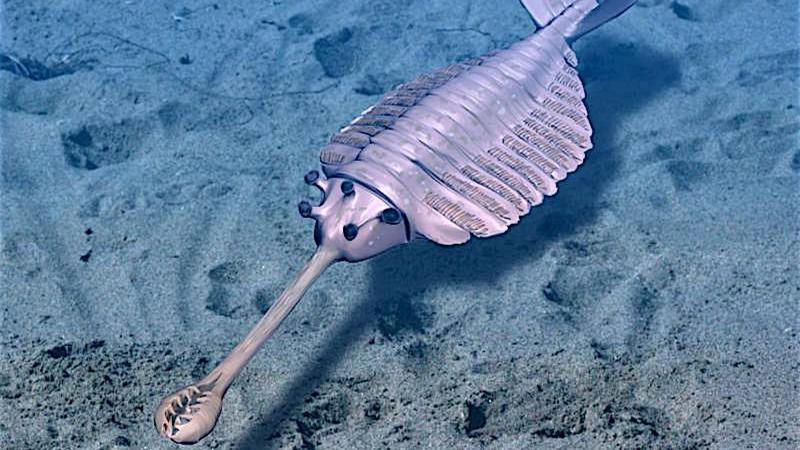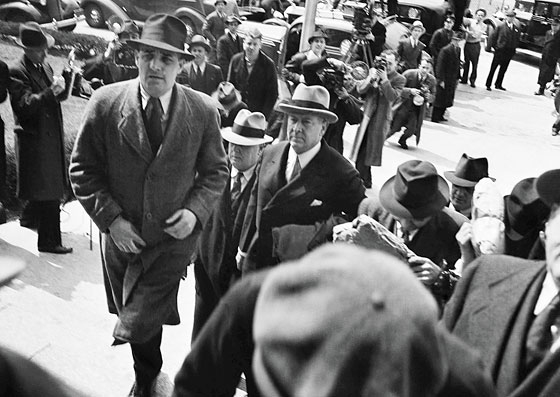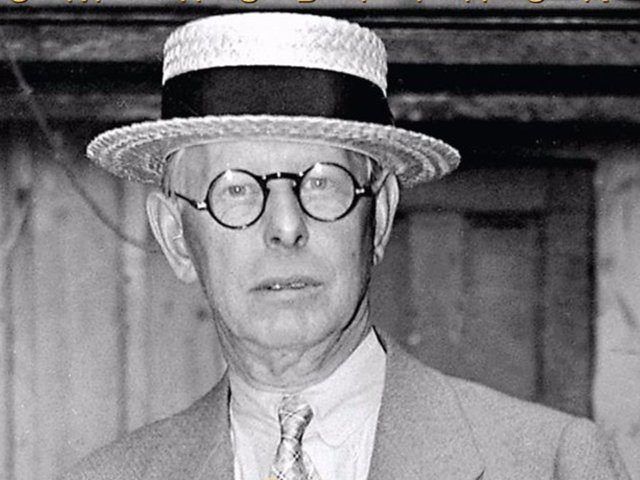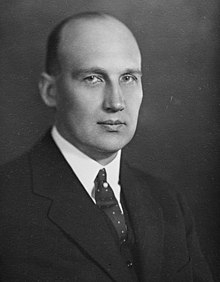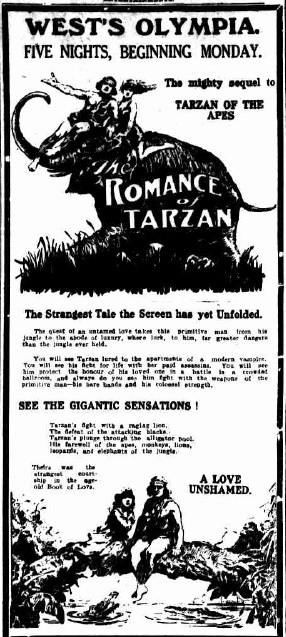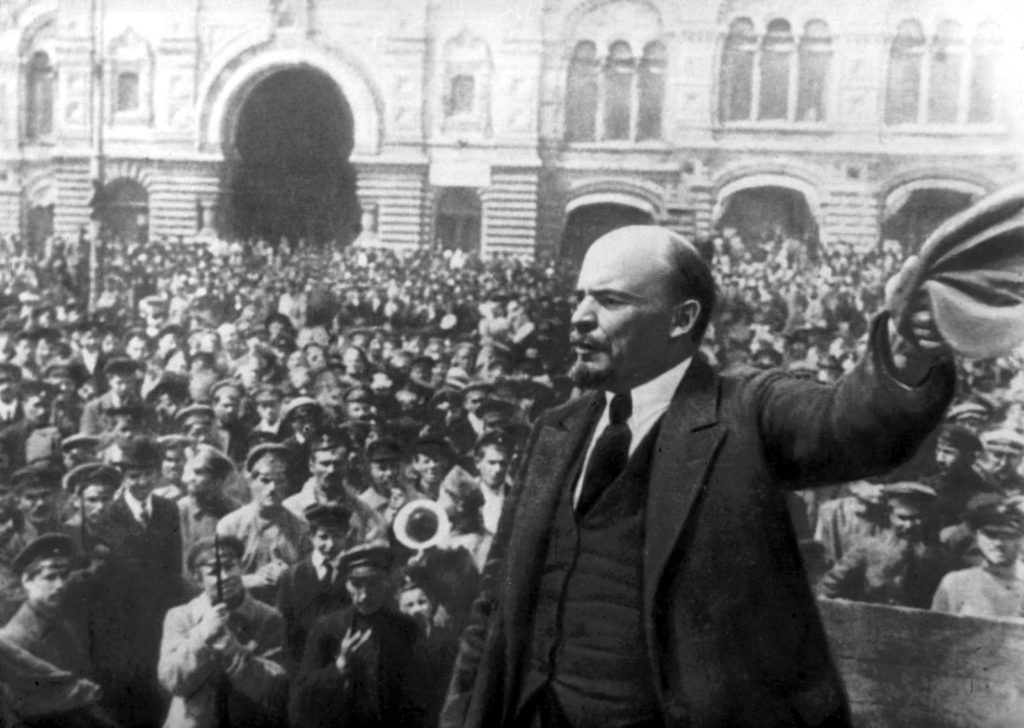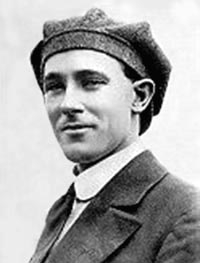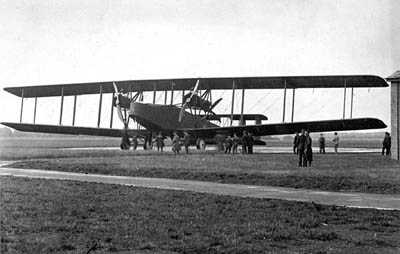
Edition: Saturday, June 21st, 1919
The Atlantic is Crossed in 16 Hours
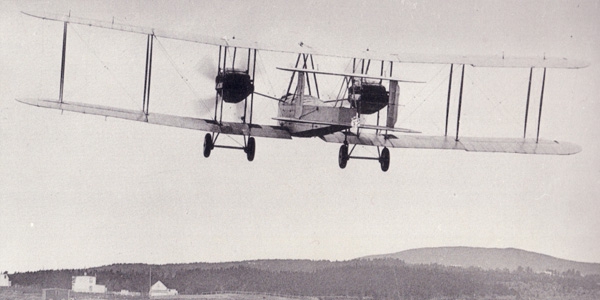
Transcript of articles from The Brisbane Courier published on Saturday, June 21, 1919. The newsprint used for the publication was more absorbent than more modern newsprint and the ink ran, resulting in text which can be on occasion difficult to read as can been readily seen in above masthead.
The Brisbane Courier was formed from the change in ownership of several predecessor newspapers. The Moreton Bay Courier established as a weekly in June 1846, become The Courier in 1859 and following the acquisition by Keith Murdoch’s Herald and Weekly Times in August 1933, changed its name to The Courier Mail. This series of newspapers has for more than 170 years been the paper of record in Queensland, Australia. This extract from the Saturday edition of the newspaper is being undertaken on a fortnightly basis. The purpose of this publication is to examine in some detail the important events in the lives of the peoples of Brisbane and Queensland and offers an interesting insight into the often-forgotten events which dominated the social and political environment at the time. The photos which appear herein were not re-produced from the Brisbane Courier but are kindly provided by the John Oxley Library. All materials herein are believed to be out of Copyright.
The Conquest of the Atlantic
Allies Prepare to Invade Germany
Influenza Epidemic Eases
Bolshevik Concerns Linger
Javanese Volcanic Eruption
Domestic News
The Influenza Epidemic
The influenza patients in hospital last night numbered 183, as against 189 on Thursday. One death occurred yesterday. At the Exhibition Isolation Hospital 106 patients were under treatment. Of this number four were dangerously ill, eight cases were serious, 86 mild, and eight convalescent. There were four admissions and 11 discharges. Forty-three persons were in St. Laurence’s Hospital yesterday suffering from influenza. Of these two were dangerously ill and six seriously ill. The rest of the cases were mild or convalescing. One death occurred.
The General Hospital’s report stated that six males and two females were in hospital, also one nurse from the Children’s Hospital. The report issued by the Children’s Hospital showed that the hospital contained eight patients, two of whom were serious. There had been one admission, and one discharge.
Two patients were discharged from the Mater Misericordia Public Hospital yesterday. The nine patients remaining are reported to be progressing. There was no change in the position at the Kangaroo Point Military Hospital last night. The eight patients there are doing well.
DEATH REGISTRATIONS.
Four deaths have been registered at the Registrar-General’s office since last report. These include one male at the Exhibition Hospital and two females outside the isolation hospitals from influenza and pneumonia, and one male outside the hospitals from pneumonic influenza. This brings the registrations since May to 283.

QUARANTINE CAMP CHARGES.
Some figures are now available at the Home Secretary’s Office regarding the collection of accounts from persons who were compelled to use the quarantine camp at Wallangarra, Coolangatta, Tenterfield, Stanthorpe, Goondiwindi, and Mungindi during the earlier days of the epidemic, when State quarantine was in force. The total amount owing to the Government from these sources is given at £l6,625/17/10. The total amount collected to date is £9007/16/2, leaving a balance of £7018/1/8 to be recovered. Accounts are still being collected.
BABY CLINIC NURSES.
As a result of the decline in the number of cases of influenza the nurses at the Baby Clinics in Brisbane have resumed their usual duties.

Railway Mishaps

The engine of train 32, which left Brisbane at 4.40 p.m. yesterday for Ipswich, failed at Toowong, and another engine, P.B. 394, was sent from Brisbane to take the train to its destination, them train arriving at Ipswich about 6.25, or 25 minutes late. As a result, the employees who cease work at 6 o’clock and travel by train to the suburbs were unable to leave the city until 6.30. The engine of 32 up was to work a train back to Brisbane at 8.20, and it was taken over to the roundhouse at North Ipswich, and left standing on one of the roads clear of the turntable. By some means, however, the engine moved forward and fell into the turntable pit, the tender remaining on the line. A breakdown gang, under the supervision of Messrs. C. F. Pemberton (Chief Mechanical Engineer), J. E. Robinson (works manager), W. Meyer, and G. Foreman, was despatched from Ipswich and immediately set to work to get the engine back on the rails. By means ot packing they built up the wheels until they were level with the rails, when another engine hauled it on to the road. The locomotive was found to be minus the leading bogey, while the cowcatcher was smashed, but otherwise very little damage was done to the engine. Only slight injury was caused to the turntable.
Bolshevik Agitation in Brisbane
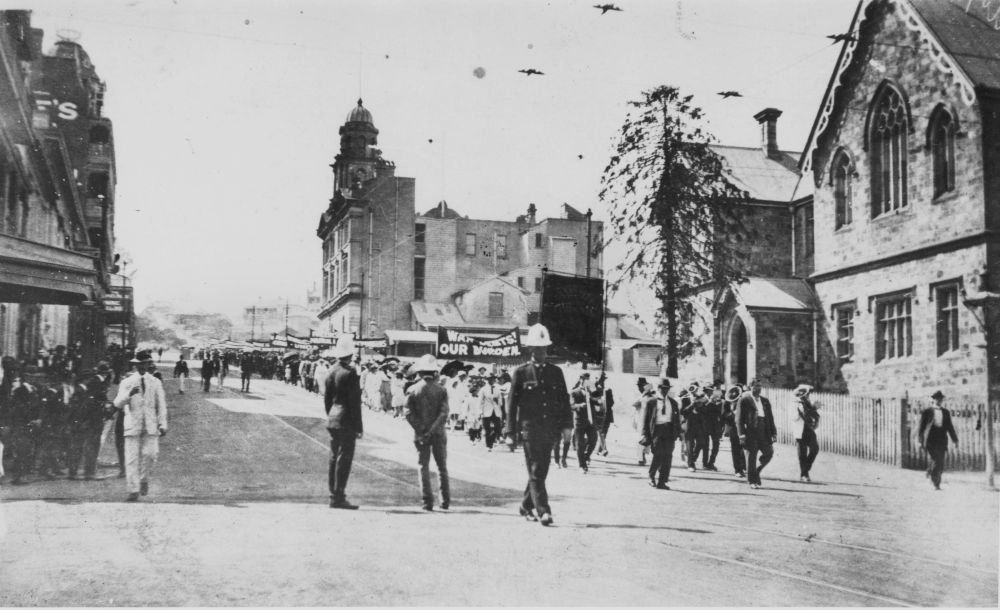
Immediately after the men generally known as “the red flag prisoners” had been sentenced to a term of imprisonment for defying a Commonwealth law, the Brisbane Industrial Council, and a
body known as “The Red Flag Prisoners’ Defence Committee,” commenced an agitation in favour of having the men treated as political prisoners. Despite the fact that the sentences were imposed for a breach of the Commonwealth Law, the State Government interfered, and decreed that the men should be treated as political prisoners. According to an article in yesterday’s issue of the official organ of the Government Party, “the prisoners now receive all their food from outside, this being provided by the Defence Committee. As already announced, the prisoners are wearing their own clothes, and they are not compelled to work, but spend their time in reading, writing, studying, and debating the issue of the day.”
In a report of a meeting of the Brisbane Industrial Council, it is stated that “a letter was received from G. Taylor, one of the red flag prisoners, on behalf of his fellow prisoners,” requesting that their case be further considered. In the course of discussion it was urged that the State Government should release the prisoners, and it was decided that a deputation from the council should wait on the Home Secretary as soon as possible to impress upon him the absolute necessity of having the evidence reviewed.
That the Government is expected to release the prisoners by defying the Federal Government is set forth in a paragraph in an editorial, reading as follows:-“The matter is plainly one in which the State Government should exert its powers to the utmost. The Federal Government may have the overlordship, but the prison in which the men are confined is State property and is State manned. “It is not very long since the Brisbane Industrial Council, and members of the Ryan Government, were declaiming in violent language against the Legislative Council because that Chamber refused to pass a Bill absolutely surrendering to the Commonwealth Government (then, a Labour Government) some of the sovereign rights of the State. Now this same party appears to be openly defying the Iegitimate powers of the Commonwealth”.
Minister Blasts Mt Morgan’s Mine
The Minister for Railways (Mr. J. A. Fiheldy) made the following statement yesterday regarding the Mount Morgan Mine, which ‘has been forced to close down owing to the shipping strike, which originated in Queensland and was encouraged by the Queensland Government:- “The closing down of the Mount Morgan mine opens up many curious issues. This company has paid dividends amounting to millions of pounds sterling. The Queensland Government, by comparison in royalties, etc., has received a mere trifle in revenue. In these days it is recognised that the employer has responsibilities, and modern thought is not going to permit the big employer in a moment of caprice to sack great numbers of men, and disorganise a whole community, when so inclined. That is not going to be tolerated by any Government. In future, companies of the magnitude of the Mount Morgan Company must be forced to disclose their hand to the public, and all their cards must be put on the table. It is simply scandalous that the Mount Morgan Company, which has made millions in the past, can calmly give eight hours’ notice to a whole town. Yet this has happened.
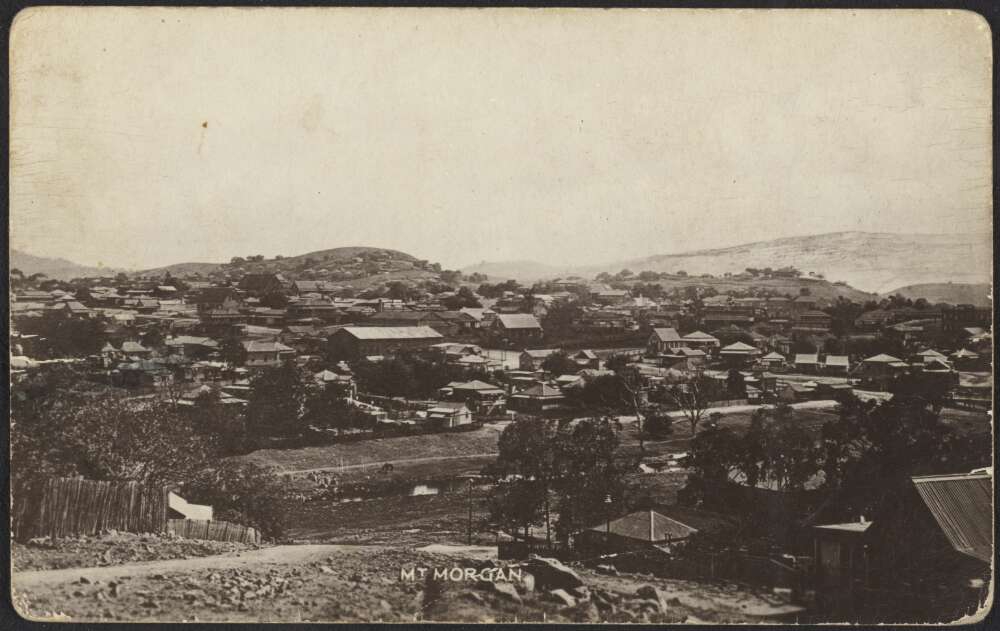
If the Mount Morgan’s Company had not to close down through stress of circumstances, then one can only conclude that some gigantic conspiracy exists amongst the employing class to make the position of the worker as difficult as possible. The Government should at once institute inquiries to ascertain the real position, and in the meantime take over, without compensation, the whole concern, and keep the men employed. After full expert inquiry the public would be informed, so far as could be ascertained, how long the mine could be usefully worked. If the mine can still
be payably worked the Government should pay over to the shareholders any surplus while working it. If the mine is not a payable proposition the problem would be one for the Government to deal with.”
The Acting Premier stated yesterday that he had not yet received any reply from the Acting Prime Minister (Mr. Watt) to the representations that had been made to him about the closing down of the Mount Morgan mine, and to the request that the Federal Government should take some action. He had received a wire from Mr. Ryan stating that Mr. W. G. Higgs had called on him, and had subsequently gone to Melbourne to interview the directors of the company there.
International News
Conquest of the Atlantic
AIRSHIP CROSSINGS
The Washington correspondent of the “New York Times” has learned in official circles that the British Government has made inquiries regarding the possibility of establishing hangars on the Atlantic coast of the United States for the use of commercial dirigibles.
ALCOCK’s GREAT FEAT
Mr. J. Daniels (Secretary of the Navy) in commenting on the flight in a Vickers-Vimy machine across the Atlantic, said: “It is a wonderful feat. I congratulate Captain Alcock and Lieutenant Brown on their flight, which is indicative of the great accomplishments in aviation in the future”.
The London correspondent of the “New York Times” interviewed H. G. Walker, the Australian aviator, who said: “The success of the Vickers-Vimy machine was a very fine performance. I heartily congratulate Captain Alcock and Lieutenant Brown. The time taken in the flight – namely – 16 hours – was very quick and it shows that they evidently met better weather conditions than Greive and I. But under the best possible conditions such a flight was wonderful. I note that their wireless failed like ours. It seems to me that there must be something to learn about that yet”.
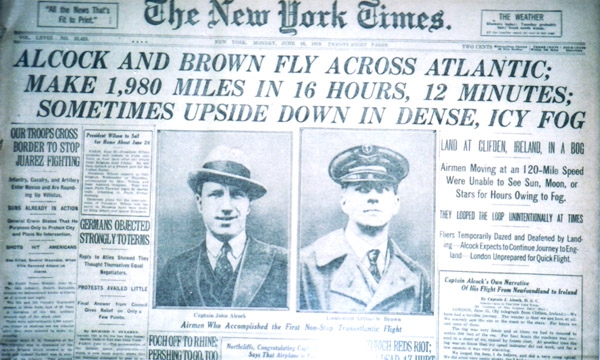
Brown at the last moment took along a small pocket flash lamp to use in reading the instruments in the event of the cockpit lighting system failing. Brown was to wireless the position every hour and receive an hourly weather report from Washington, which would be relayed by all Atlantic ships. Both aviators rested well the night before the start. Captain Alcock expressed the concern that if he was successful in crossing the Atlantic, he would make another flight from London to New York in a large specially built, Vickers machine.

The London correspondent of the “New York times” has cabled the “Daily Mail’s” interview with Captain Alcock, who said: “We had a terrible journey and it is a wonder we are here at all”.
Indonesia – Volcano in Eruption
A passenger by the Mataram, who is interested in the country devastated by the volcanic eruption of Mount Kloet, Java, states that the tragedy was caused by a lake on the mountainside overflowing into the crater. The eruption commenced at 1 a.m., and lasted 40 minutes. Pitch darkness prevailed for 10 hours owing to the showers of volcanic ash. Three streams of mud, stones and boiling water, and sand tore down Mt Kloet, which is 5,000 ft. high. One stream was three miles wide and in the centre 75ft. deep. The other two were smaller.

THOUSANDS OF PERSONS BURRIED
The flood struck the town of Bitta, 30 miles away, in an incredibly short time destroying the Chinese quarter and burying thousands of people. One large estate lost 16,000 coolies, and sustained £400,000 damage. Two storey reinforced houses was instantly battered to pieces by huge stones, and disappeared. Distracted people rushing to avoid the big stream were engulfed in others. The flames from the crater were hundreds of feet high, presenting an awful aspect amid the Cimmerian darkness elsewhere. Only bodies lying in shallow deposit of loamy black sand, which was deposited by the volcanic streams, are being recovered. It is estimated that 40,000 bodies will not be recovered. A rain of ash continued for two days and a light deposit fell in Surabaya, 80 miles distant. Many young rubber trees were broken down with the weight of the ash.
It is estimated that 50,000 persons, including a few whites, perished in the streams which covered 40,000 acres of rich sugar, coffee and rubber land which will now be useless for cultivation on a large scale owing to the enormous quantity of stones, varying from 2lb to 20 tons each, which thickly cover the country. Mt Kloet had twice erupted previously. The government now intend to keep the lake drained to prevent a further catastrophe.
European Peace Treaty – Preparing for a German Refusal
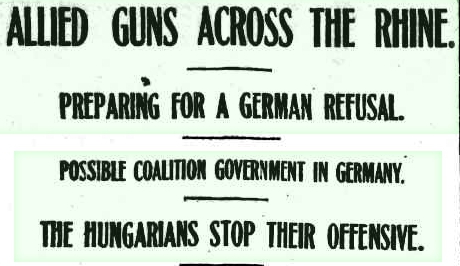
The concentration of British and French troops ready to march into Germany has been completed. Artillery sections have been moved across the Rhine. The catholic Centre Party in Germany is prepared to sign the peace treaty. The majority of the German Government are opposed to signing the treaty, and with Herr Ebert, the President, are expected to resign if the Assembly accepts the treaty.
Conflict Continues in Europe
The Australian Press Association learns that the struggle between the Czechoslovaks, assisted by the Roumanians and the Hungarian, has ended as a result of a note from the Council of Four, sent June 14, ordering hostilities to cease, and the armies to retire to the national boundaries. The Hungarians accordingly stopped their offensive. The Roumanian Army, on the left, assisted by Polish troops, have taken the offensive against the Bolsheviks in Galicia. The Bolsheviks have retired for 50 miles.
The situation is still strained between Austria and the Jugo-Slavs. The Italians apparently have undertaken a counter-move against the Jugo-Slavs’ advance in the Klagenfurt area, by occupying Villavs, but the Jugo-Slavs have now got all they want, and so it is hoped that there will be no further trouble between them.
Afghanistan Armistice
Afghan messengers who have brought the reply of the Amir of Afghanistan to the dispatch of the Viceroy of India (Lord Chelmsford) into the British lines report that a three month’s armistice is being arranged.
Russian Revolution
General Denekin, leader of the Don Cossacks, has achieved further successes against the Bolsheviks. He acknowledges General Koltchak as supreme leader of the Russian armies.
Italian Chaos
The Italian cabinet is reported to have resigned.
Turkey – Australian War Graves
Lieutenant Keesing, of Sydney, who is now in London, denies the statement that the Turks desecrated the graves of Australians. On the contrary, the Turks put the Beach and Shrapnel Valley cemeteries in order.
China
Despatches from Peking show that the Cabinet has resigned on account of the popular movement against the alleged pro-Japanese members of the Cabinet. The Japanese Government and officials are taking a grave view of the anti-Japanese demonstrations in Shanghai, and fear Bolshevik influences there.
United States of America
The American Federation of Labour has rejected a proposal to form a political party, but has adopted a reconstruction programme, providing for a higher standard of living throughout the industry. The Lower House of the Ohio Legislature has passed a resolution to stop the Willard-Dempsey boxing contest.
South Africa
The House of Assembly, South Africa, has ratified the free gift by the Government of 550 acres of Government lands near Capetown to a trust, for the purpose of establishing a garden city to relieve the house shortage.
Finance and Markets
Trade and Finance
In Melbourne the sugar position, according to the “Argus,” has become more acute than ever. It is added that consumers are apt to be discriminating in regards to colour and quality but they have been fortunate enough in most instances to get some supply. Recent arrivals of Mauritius sugar have been cleared but Queensland Yellow Crystal is available at the same price as 1A.
A new bank to operate in the Pacific Islands has been started by Japan and neighbouring Asiatic centres. It is to be called the Kanan Kasho Ginko and will transact general banking business.
The London Times of April 24 says: “While the Australian States are delighted that Great Britain is prepared to finance the emigration of ex-soldier, no state is prepared to expedite immigration. All are waiting to see if Great Britain will provide loans to build development railways, which will give employment” The Premier will probably be able to give particulars of any arrangement made with the British Government.
Mining, Stocks and Shares

Yesterday was a busy day on the Brisbane Stock Exchange, the majority of the investment stocks being enquired for, but few of the resulting transactions were recorded on change. Adelaide Steam Ship Co shares were quoted at 45/45 and Howard Smith ordinary shares at 33/-35The advanced offer of 72/6 for Brisbane Tramways preference shares failed to produce a seller. City Electric Light new issue had a closer market at 8/-8/6 the shares paid for 12/ being quoted at 16/9-18/9 and the fully paids at 27/6-28/6. Finney, Isles & Co maintained their advance at 23/6-35 and Alan and Starks new shares were firm at 22/-24/6. Woollen advanced to 10/9 buyer, seller asking 11/6. International Boring Company shows a wide market, 22/-28/. Buyers of Queensland Deposit Bank shares advanced to 7/. The 1935 and 1927 War Bonds were slightly easier, but the 1923 War Bond shows a stronger tendency, as did the £10 bonds, a few sales were made on change. Mt Morgan’s were in request at 17/9 and Broken Hill Proprietary were offered at 40/..
Colossal Gold Mining Company
The Queensland Government Mining Journal contains particulars of the prospectus of the Colossal Gold Mining Company of Ravenswood. The capital is £17,000 in 340 shares of £50 each, 90 to go to the vendors as payment for their right, the balance being offered to the public. The leases cover what is known as the Far Fanning Diggings which from 1882 to 1909 has been worked spasmodically. The new company proposes to deal with the low-grade material on a big scale, bringing in water and erecting a mill. It is concluded that open cut work to a depth of 80 feet will allow the mining of 280,000 tons at an average grade of 24/6 per tonne with costs of 10/.
Central Queensland Coal Mining
During the past half year the sales of the Bluff Colliery Co., as disclosed at the company meeting at Rockhampton comprised, Bluff colliery 3720 ton, and Co-operative Colliery (Blair Athol) 4547 ton, against 4709 tons and 3602 tones respectively int eh previous year. According to the report published in the Queensland Government Mining Journal water has been causing troubles in the Co-operative Colliery, and the present pumping plan will have to be replaced by one more powerful.
Trade and Finance
In Melbourne the sugar position, according to the “Argus,” has become more acute than ever. It is added that consumers are apt to be discriminating in regards to colour and quality but they have been fortunate enough in most instances to get some supply. Recent arrivals of Mauritius sugar have been cleared but Queensland Yellow Crystal is available at the same price as 1A.
A new bank to operate in the Pacific Islands has been started by Japan and neighbouring Asiatic centres. It is to be called the Kanan Kasho Ginko and will transact general banking business.
The London Times of April 24 says: “While the Australian States are delighted that Great Britain is prepared to finance the emigration of ex-soldier, no state is prepared to expedite immigration. All are waiting to see if Great Britain will provide loans to build development railways, which will give employment” The Premier will probably be able to give particulars of any arrangement made with the British Government.
The Queensland Government Mining Journal contains particulars of the prospectus of the Colossal Gold Mining Company of Ravenswood. The capital is £17,000 in 340 shares of £50 each, 90 to go to the vendors as payment for their right, the balance being offered to the public. The leases cover what is known as the Far Fanning Diggings which from 1882 to 1909 has been worked spasmodically. The new company proposes to deal with the low-grade material on a big scale, bringing in water and erecting a mill. It is concluded that open cut work to a depth of 80 feet will allow the mining of 280,000 tons at an average grade of 24/6 per tonne with costs of 10/.
During the past half year the sales of the Bluff Colliery Co., as disclosed at the company meeting at Rockhampton comprised, Bluff colliery 3720 ton, and Co-operative Colliery (Blair Athol) 4547 ton, against 4709 tons and 3602 tons respectively int eh previous year. According to the report published in the Queensland Government Mining Journal water has been causing troubles in the Co-operative Colliery, and the present pumping plan will have to be replaced by one more powerful.
Weather Queensland
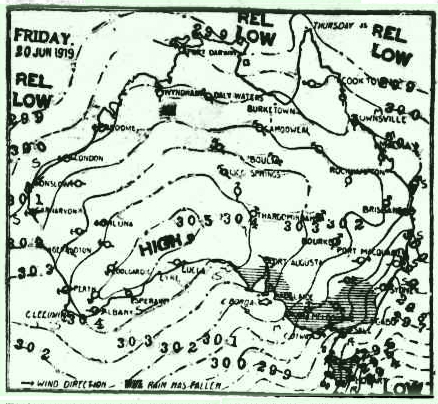
The maximum temperature in Brisbane yesterday was 67.4 deg:. Minimum 43 deg. Forecast for Queensland for the 24 hours ending noon today: Fine: south-westerly winds in the south-east, otherwise south-easterly; many frosts over the interior and South Coast division.
Mails
A mail for the Expeditionary Force in Egypt, the United Kingdom, and France will close at the GPO next Tuesday, packets at 6.5 a.m., and letters at 7.5 a.m.
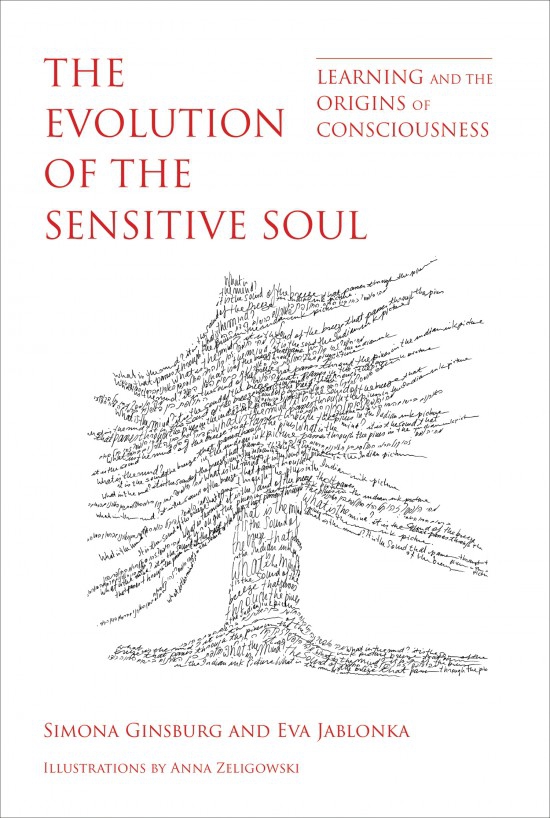 A new book from
A new book from 
